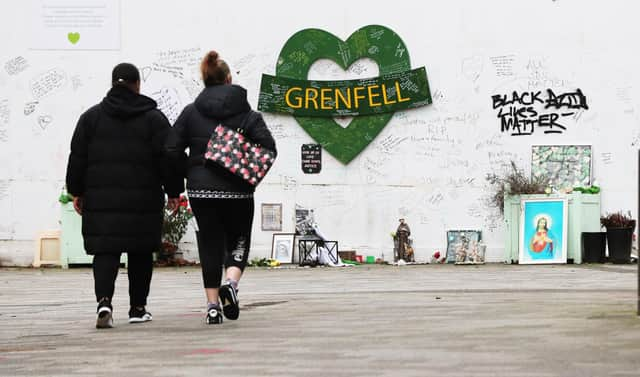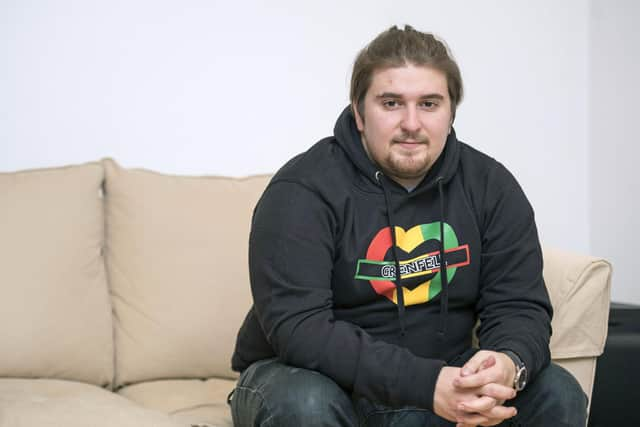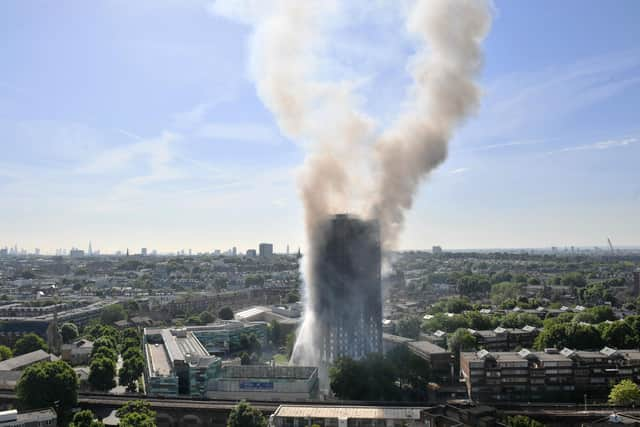Grenfell Tower Inquiry: when was the disaster, who were victims, and what progress has been made in the investigation?


It’s been four years since a small kitchen fire in a Grenfell Tower flat on an estate in Kensington turned into the most deadly domestic blaze since the Second World War.
A public inquiry was started in 2017 to look into what happened - but how much progress has been made into the investigation and cladding scandal?


When was the disaster?
On 14 June 2017 the UK watched on in horror as a west London tower block was destroyed by flames.
Advertisement
Hide AdAdvertisement
Hide AdThe deadly fire at Grenfell Tower started in a kitchen on the fourth floor and spread through the 23-storey building rapidly upwards and across the eastern side of the flatblock.
Grenfell Tower had a ‘stay put’ fire policy which meant residents on the night were told to keep inside their flats while firefighters tried to contain the flames.


The building design was meant to contain a fire to a single flat.
At 2.06am - just one hour and 12 minutes after the fire service was first called - 40 vehicles were on scene and the blaze was declared a major incident.
Advertisement
Hide AdAdvertisement
Hide AdThe most significant part of the renovation of Grenfell Tower was the addition of external cladding.
In his report to the public inquiry, Professor Luke Bisby said evidence "strongly supports" the theory that the polyethylene material in the cladding was the primary cause of the fire's spread, according to the BBC.
Who were the victims?
The final death toll from the blaze was 72.
The tragedy prompted a public inquiry, ordered by the former Prime Minister Theresa May which is still ongoing.
Husna Begum, 22, Reabeya Begum, 64, Mohammed Hanif, 26, Mohammed Hamid, 27, and Kamru Miah, 79 were among five members of a single family who died on the 17th floor - and were identified by their dental records.
Advertisement
Hide AdAdvertisement
Hide AdA survivor of the Grenfell Tower disaster has said ex-residents are still being “denied swift justice” four years on from the catastrophic fire.
Tiago Alves, his father, mother and younger sister all escaped from their home in Flat 105 on the 13th floor in the early stages of the deadly blaze on 14 June, 2017.
On the night of the fire, his parents, returning home after dropping off visiting family at their hotel, became aware of smoke on the fourth floor.
Mr Alves’s father woke his sleeping children and alerted other residents on their floor to get out of the building that would eventually become engulfed in the smoke and flames that claimed 72 lives.
Advertisement
Hide AdAdvertisement
Hide Ad“There was a long time where I did feel like it could have been different, it could have been me,” he told the PA news agency.
What progress has been made into the investigation?
Mr Alves, 24, recalled the “frightening” and “chaotic” scenes four years ago, adding that he was “disappointed” at progress since.
He said recommendations from the phase one report of the ongoing inquiry into the fire had not been implemented, and noted the absence of the social housing white paper in the recent Queen’s Speech package of proposed legislation.
On 30 October 2019 a report following the first phase of the inquiry was published looking into what happened on the night of the blaze.
Advertisement
Hide AdAdvertisement
Hide AdOn 27 January 2020, phase 2 began to examine the reasons for why the fire at Grenfell Tower happened.
Meanwhile, the Metropolitan Police has previously been told to wait until the public inquiry has published its final report before passing evidence to the Crown Prosecution Service to consider any criminal charges.
“Implementing recommendations and the social housing white paper are important pieces of legislation for us to feel like it’s moving forward,” Mr Alves said.
“Because a criminal investigation can’t go ahead until the inquiry is over, it does feel like we’re being denied swift justice.
Advertisement
Hide AdAdvertisement
Hide Ad“It still doesn’t feel like we’re any closer to achieving the justice that people who passed away deserve. It just feels like it’s taking a long time.”
Local churches close to the tower site have prepared a special online service to be shared on 20 June.
Mr Alves, who still lives in the local area, said he has had therapy since the fire to help him cope with “survivor’s guilt” and the “extremely difficult” period afterwards.
He is now studying for a masters degree in physics, while his sister Ines, who famously sat her GCSE chemistry as a 16-year-old the morning after the fire, has finished her first year of university.
Advertisement
Hide AdAdvertisement
Hide AdMr Alves now supports the campaign for justice and backs those advocating for cladding and flammable materials to be removed from buildings.
“In our opinion, the best form of justice that we feel like we can achieve at this very moment, apart from actual criminal justice, is making sure that people are safe in their homes,” he said.
“That’s our way of honouring the legacy of those who’ve passed away, whilst at the same time feeling like their deaths weren’t in vain.”
To mark the anniversary Mr Alves said he will find time to visit the base of the tower which he wants to eventually be turned into “a memorial” and “place where the community can learn to heal and inspire the youth in the local area”.
Advertisement
Hide AdAdvertisement
Hide AdGrenfell United, a group of survivors and bereaved families, said: “We hear more damning evidence every week at the public inquiry showing us just how preventable the fire was – had they listened.
“Yet four years on, the Government are as determined as ever to avoid taking any meaningful action to prevent another Grenfell.
“We’re determined to keep the pressure on Government to break this cycle of inaction and indifference, and to confront those guilty parties that continue to show complete disregard to the safety of us all.
“Grenfell has highlighted a toxic political culture within the construction industry. Both the Government and the building industry corporates involved have striking similarities – which is total lack of regard for human safety.
Advertisement
Hide AdAdvertisement
Hide Ad“We will continue to campaign for truth, change, and justice – not just for our loved ones, but for the whole country, to ensure that no one has to suffer how we have suffered, and so that such a tragedy never happens again.”
What happens next?
Phase 2 of the inquiry is well underway – with more witness evidence being heard as it gets into week 40.
Relatives of Grenfell Tower fire victims have now put forward plans to turn the building into a ‘vertical forest’ and covered in 72 plants – one for each person who died.
Back in May, the government published a letter revealing it was considering if and when Grenfell Tower should be “carefully” taken down.
Advertisement
Hide AdAdvertisement
Hide AdSome relatives said they would pursue legal action to thwart any attempt to pull down the building as it remains a monument to every person who died, The Guardian has reported.
Additional reporting by PA.
